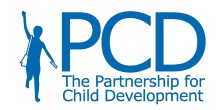 News
News  How School Feeding can Improve both Education and Wealth
How School Feeding can Improve both Education and Wealth
The 2008 food, fuel and financial crises have highlighted the importance of school feeding programmes both as a social safety net for children living in poverty and food insecurity, and as part of national educational policies and plans. School feeding programs can help to get children into school and help to keep them there, through enhancing enrollment and reducing absenteeism; and once the children are in school, the programs can contribute to their learning, through avoiding hunger and enhancing cognitive abilities.
It is for this reason that at the EFA meeting in Addis Ababa in February 2010, the participants urged, “Education For All Partners [should] intensify efforts to support initiatives targeted at the most marginalized, such as cash transfers, school health and school feeding, scholarships and gender-specific-interventions.”
Furthermore, school health and nutrition interventions have been recognised in addressing the Millennium Development Goals(MDGs) of universal basic education and gender equality in educational access. In order to achieve these goals, it is essential that even the poorest children, who suffer most from ill health and hunger, are able to attend school and learn while there. Disadvantaged children –the poor, the marginalized, girls, children in fragile states– often suffer the most from ill health and malnutrition and therefore benefit most from school health programs.
The human right to food
National governments have also prioritised school feeding programs for their social protection and social inclusion dimension. In the United Kingdom school feeding was the first component of the welfare reform in 1906. While in Brazil, the school feeding programme is prioritised within the Zero Hunger Strategy to address hunger and ensure the human right to adequate food for all. In fact today, there are at least 330 million children receiving school meals, in almost every country in the world and countries are investing approximately 30 billion dollars on school feeding every year (WFP, 2012).
Comprehensive school health and nutrition
The complimentary nature of school health and nutrition interventions, such as school based deworming and school feeding, suggests that when implemented together associated health and education benefits can be multiplied. School feeding can help to create an enabling environment for design and delivery of these other key public service delivery programmes. Given its cross sectoral content and wide ranging impact, school feeding programmes are usually well equipped to drive and support other interventions on education, nutrition, health, hunger and sanitation. A comprehensive approach to school health and nutrition is recognised by the Focusing Resources for Effective School Health (FRESH)and Global Partnership for Education (GPE) partners as a means of contributing to the health, nutrition and educational needs of children
School health and nutrition programmes, particularly when embedded within broader child development strategies, are in integral part of the long term development of a child. As part of a continuum of development support, inclusive of maternal and child health as well as early child hood development, school health and nutrition programmes are a critical step to ensuring a child is able to reach their full potential.
Community wide benefit
School health and nutrition initiatives, such as school feeding, clearly contribute to the child rights framework as articulated in the Convention on the Rights of the Child (OUNHCHR, 1989) inclusive of the right to food, the right to health and the right to education. However, there is even greater potential for school feeding programmes to contribute to the development of the child, but the development of the community as a whole. As school feeding programmes run for a fixed number of days a year and have a predetermined food basket, they can also provide the opportunity to benefit farmers and producers by generating a structured and predictable demand for their products, thereby building the market and the enabling systems around it.
This is the concept behind Home Grown School Feeding (HGSF), identified by the Millennium Hunger Task Force as a quick win in the fight against poverty and hunger and highlighting the broad potential benefits of school feeding programmes when well planned. It is this opportunity to link to agriculture which has put Home Grown School Feeding as a priority within many national governments and as pillar three of the African Union Comprehensive Africa Agriculture Development Programme (CAADP).
Long-term development
School feeding programmes illustrate the role education and schools have in the long term development of the country. This is most obvious through the education and health improvements of children, which lead to a greater earning potential later in life, thus breaking the cross-generational cycle of poverty. Additionally, when school feeding programmes provide a structured market for local agricultural production, there is an opportunity to boost local economies by reinvesting resources into the communities of the children these programmes are serving. In this way, school feeding programmes provide an opportunity for national governments to invest in the long term development of both children and the greater economic development of the community.
Further reading
- Rethinking school health: A key component of education for all The World Bank
- School Feeding Programmes and Development: Are We Framing the Question Correctly? World Bank Research Observer. Washington, DC: The World Bank.
- How effective are food for education programs? A critical assessment of the evidence from developing countries. Food Policy Review No. 9, International Food Policy Research Institute, Washington, DC.
- Convention on the Rights of the Child. Office of the United Nations High Commissioner for Human Rights.



